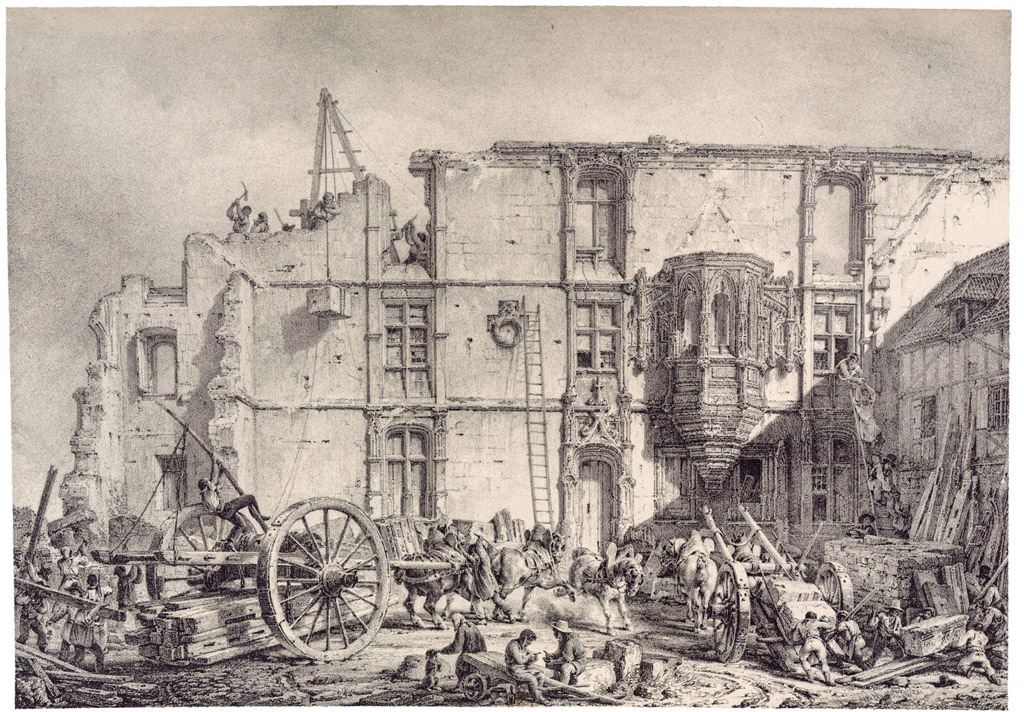Rosemary Hill - Times Witness: History in the Age of Romanticism
Here you can read online Rosemary Hill - Times Witness: History in the Age of Romanticism full text of the book (entire story) in english for free. Download pdf and epub, get meaning, cover and reviews about this ebook. City: London, year: 2021, publisher: Allen Lane, genre: History. Description of the work, (preface) as well as reviews are available. Best literature library LitArk.com created for fans of good reading and offers a wide selection of genres:
Romance novel
Science fiction
Adventure
Detective
Science
History
Home and family
Prose
Art
Politics
Computer
Non-fiction
Religion
Business
Children
Humor
Choose a favorite category and find really read worthwhile books. Enjoy immersion in the world of imagination, feel the emotions of the characters or learn something new for yourself, make an fascinating discovery.
- Book:Times Witness: History in the Age of Romanticism
- Author:
- Publisher:Allen Lane
- Genre:
- Year:2021
- City:London
- Rating:3 / 5
- Favourites:Add to favourites
- Your mark:
Times Witness: History in the Age of Romanticism: summary, description and annotation
We offer to read an annotation, description, summary or preface (depends on what the author of the book "Times Witness: History in the Age of Romanticism" wrote himself). If you haven't found the necessary information about the book — write in the comments, we will try to find it.
From the Wolfson Prize-winning author of Gods Architect: Pugin and the Building of Romantic Britain
Between the fall of the Bastille in 1789 and the opening of the Great Exhibition in 1851, history changed. The grand narratives of the Enlightenment, concerned with kings and statesmen, gave way to a new interest in the lives of ordinary people. Oral history, costume history, the history of food and furniture, of Gothic architecture, theatre and much else were explored as never before. Antiquarianism, the study of the material remains of the past, was not new, but now hundreds of men - and some women - became antiquaries and set about rediscovering their national history, in Britain, France and Germany.
The Romantic age valued facts, but it also valued imagination and it brought both to the study of history. Among its achievements were the preservation of the Bayeux Tapestry, the analysis and dating of Gothic architecture, and the first publication of Beowulf. It dispelled old myths, and gave us new ones: Shakespeares birthplace, clan tartans and the arrow in Harolds eye are among their legacies. From scholars to imposters the dozen or so antiquaries at the heart of this book show us history in the making.
Rosemary Hill: author's other books
Who wrote Times Witness: History in the Age of Romanticism? Find out the surname, the name of the author of the book and a list of all author's works by series.

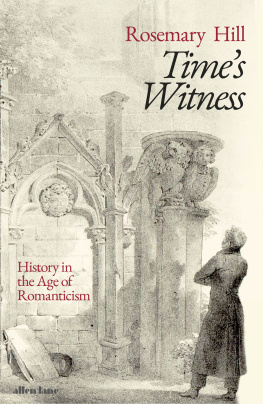



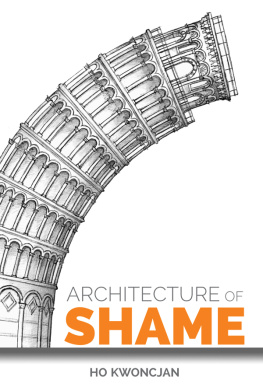
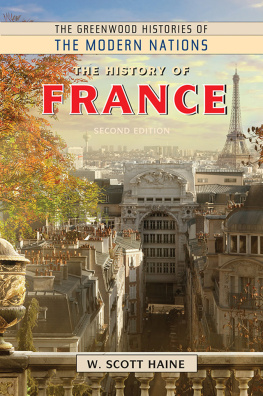
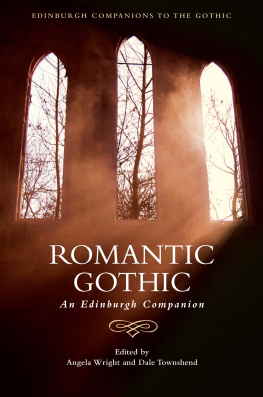
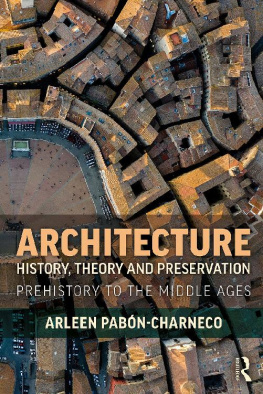
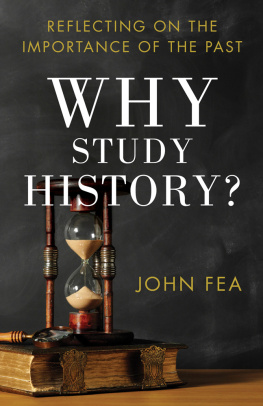


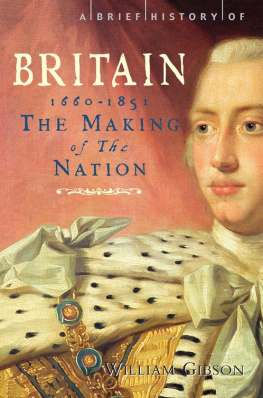
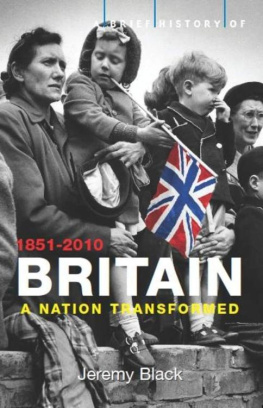
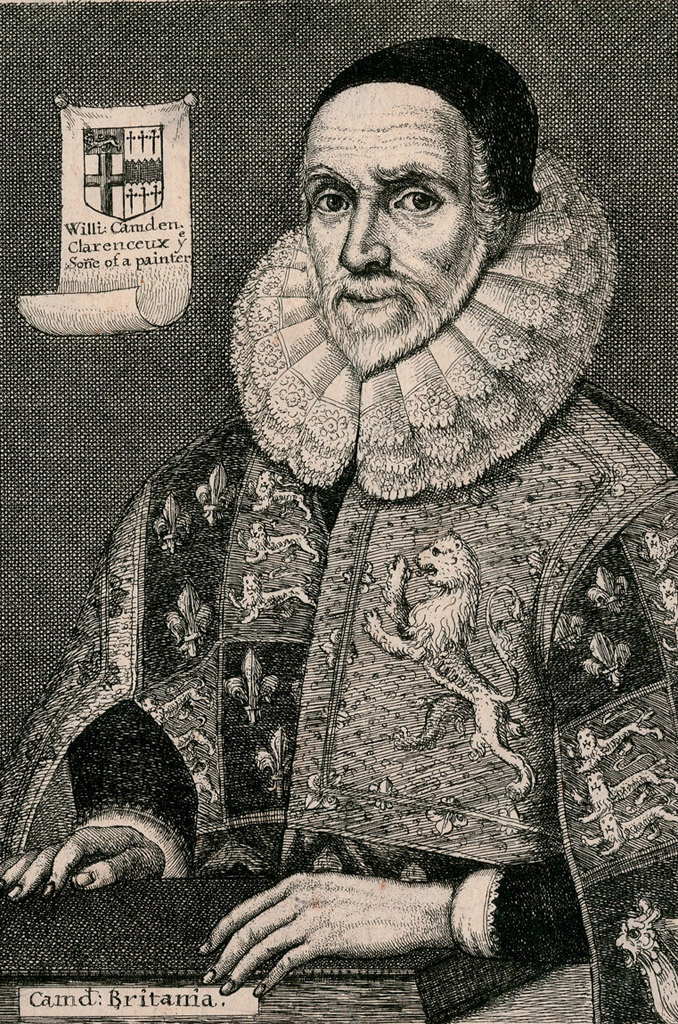 William Camden (15511623), founding father of British antiquarianism.
William Camden (15511623), founding father of British antiquarianism.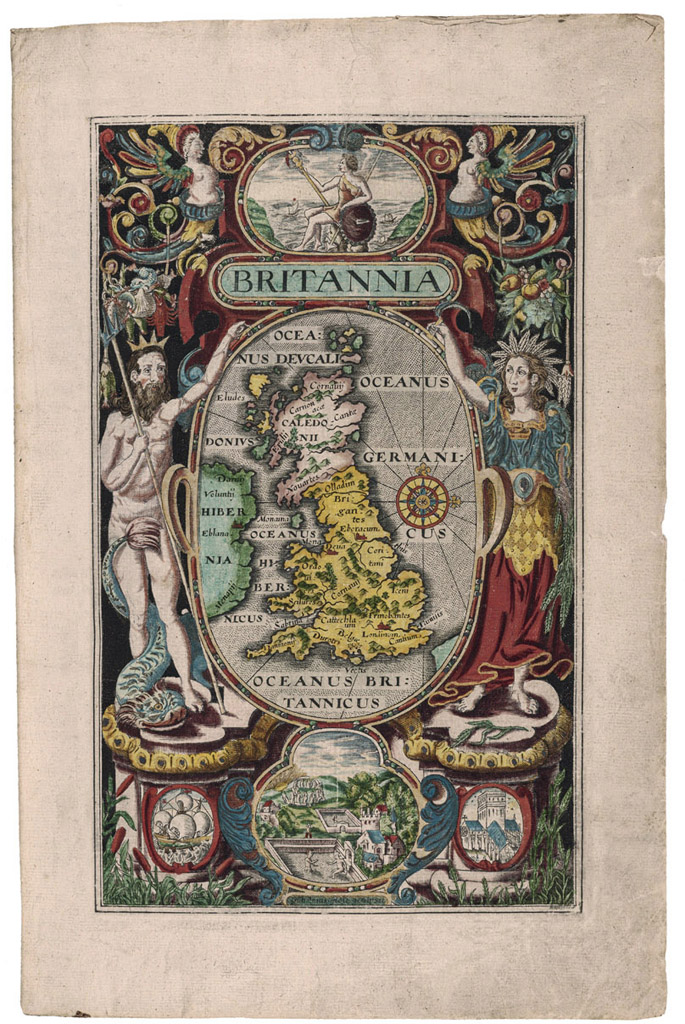 Title page of Camdens Britannia, 1610.
Title page of Camdens Britannia, 1610.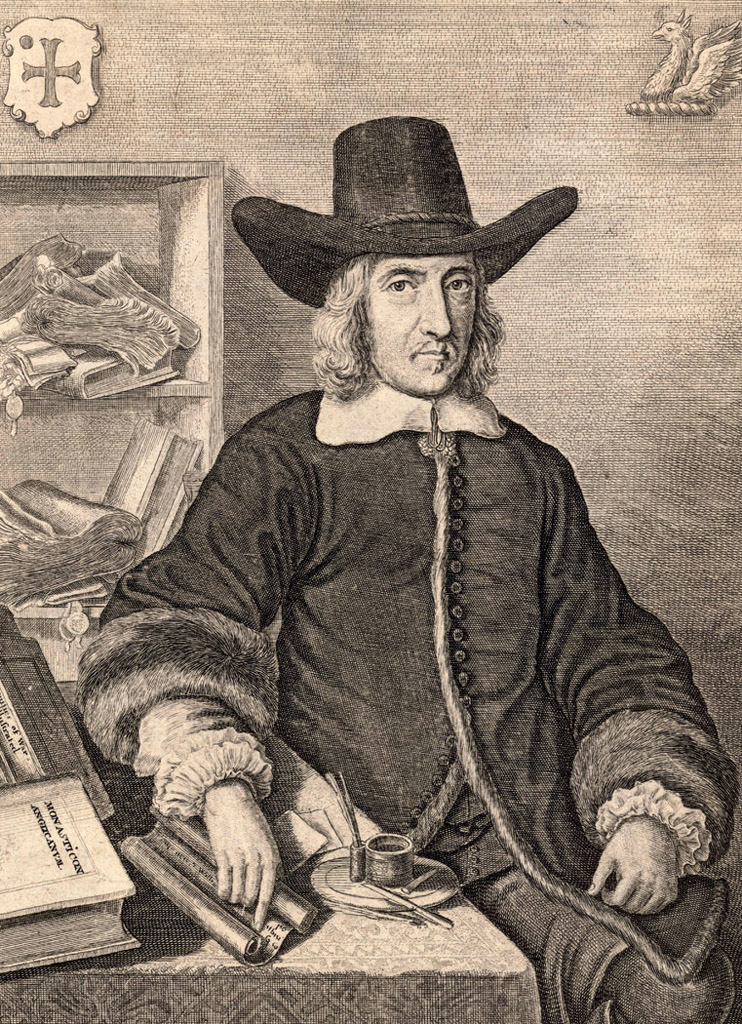 William Dugdale (160586), author of the Monasticon Anglicanum.
William Dugdale (160586), author of the Monasticon Anglicanum.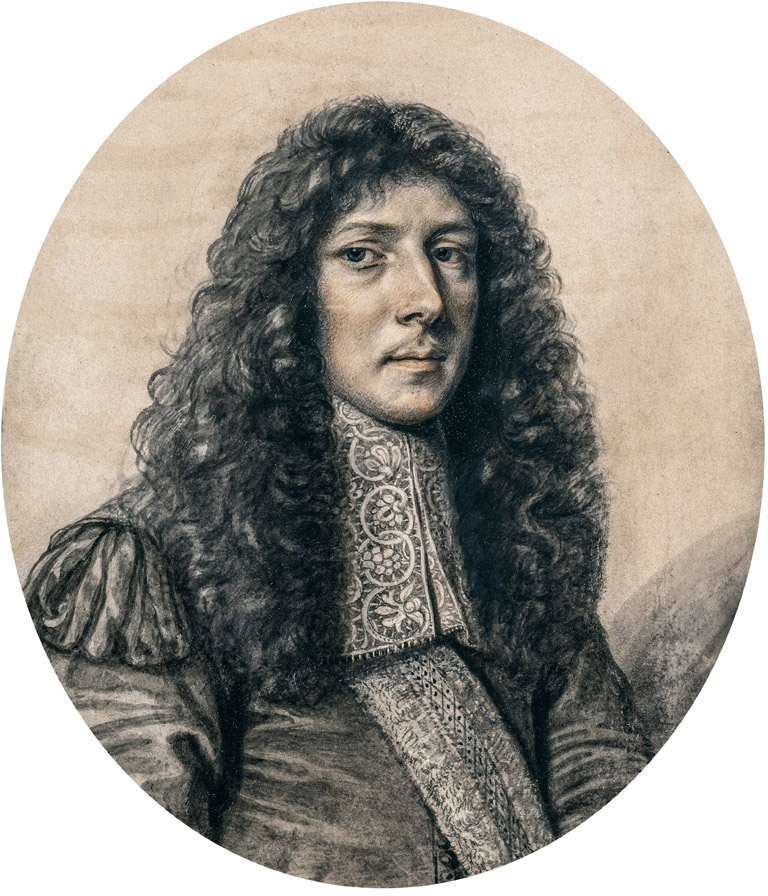 John Aubrey (162697), one of the most original minds of his or any age.
John Aubrey (162697), one of the most original minds of his or any age.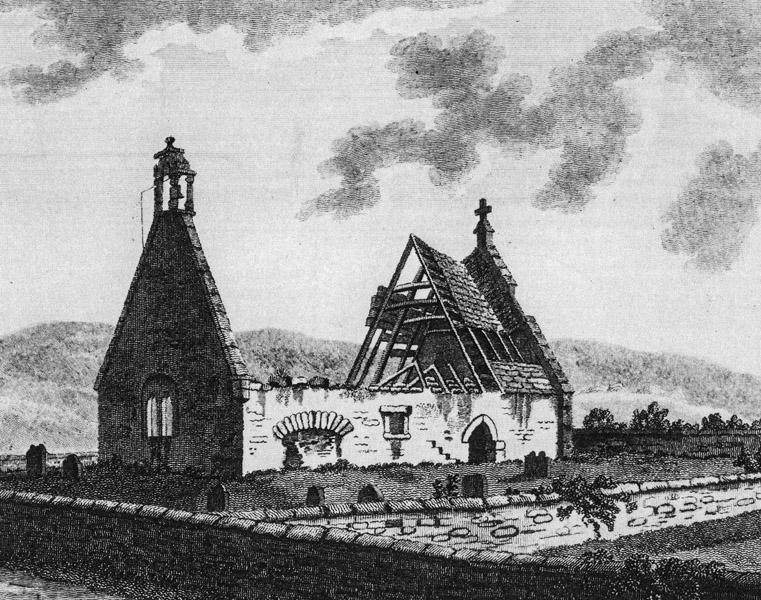 Alloway Kirk from Francis Groses The Antiquities of Scotland (178991), for which Robert Burns wrote Tam OShanter, based on the tradition of witches meetings at Alloway.
Alloway Kirk from Francis Groses The Antiquities of Scotland (178991), for which Robert Burns wrote Tam OShanter, based on the tradition of witches meetings at Alloway. Francis Grose (bap.173191), Burnss friend and an inspiration for his poetry.
Francis Grose (bap.173191), Burnss friend and an inspiration for his poetry.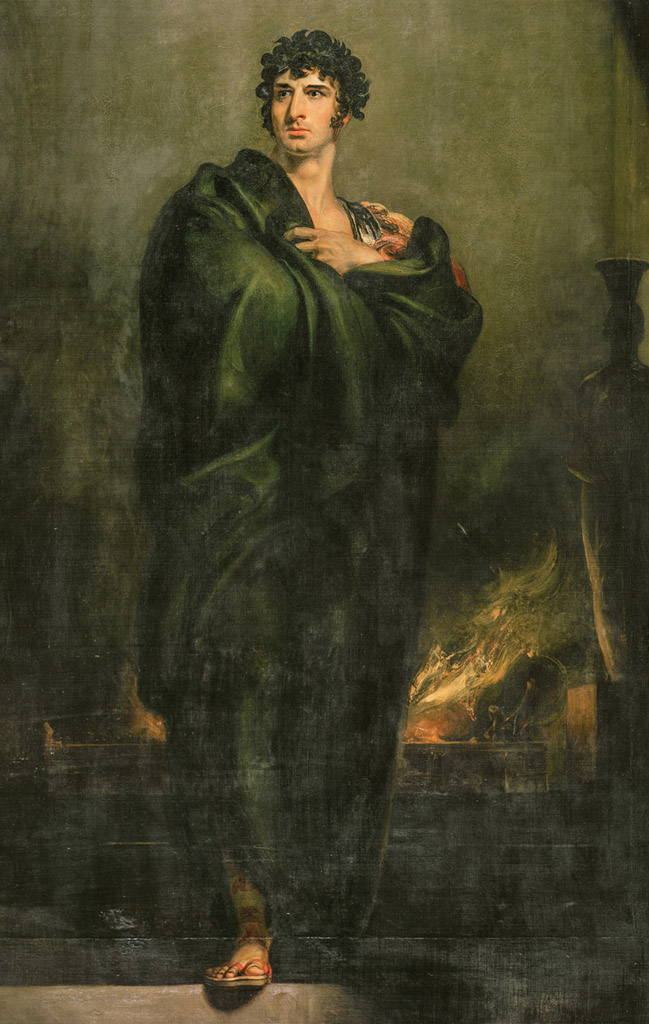 John Philip Kemble (17571823) as Coriolanus. Kemble pioneered correct historical costume in productions of Shakespeare.
John Philip Kemble (17571823) as Coriolanus. Kemble pioneered correct historical costume in productions of Shakespeare.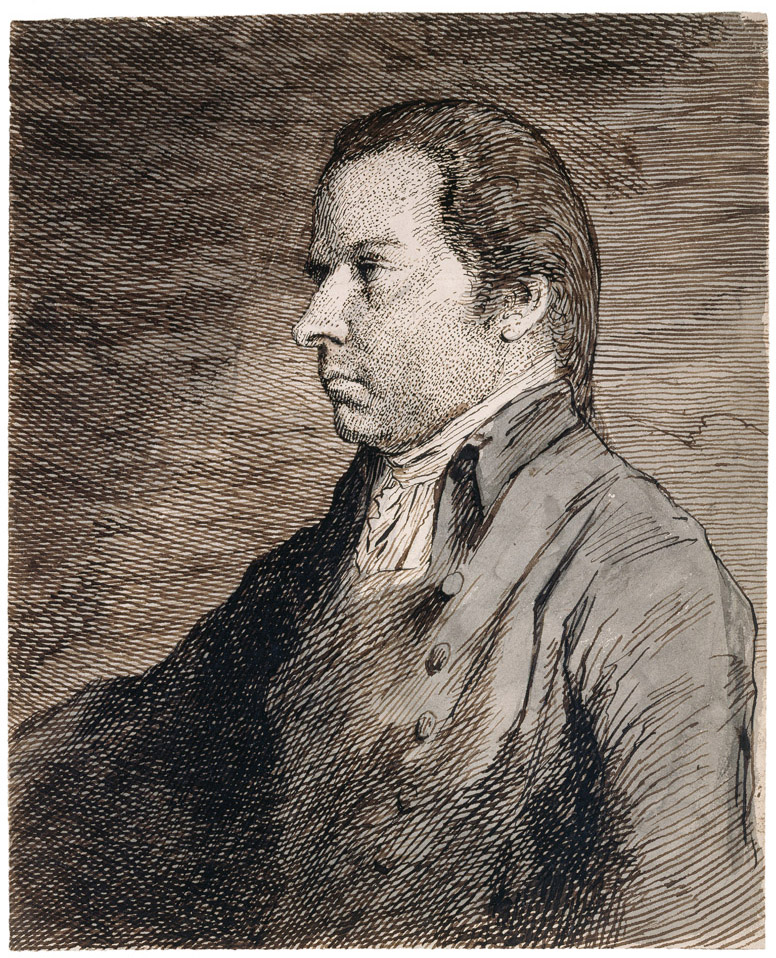 Francis Douce (17571834), expert on Shakespeare and the history of the Dance of Death.
Francis Douce (17571834), expert on Shakespeare and the history of the Dance of Death.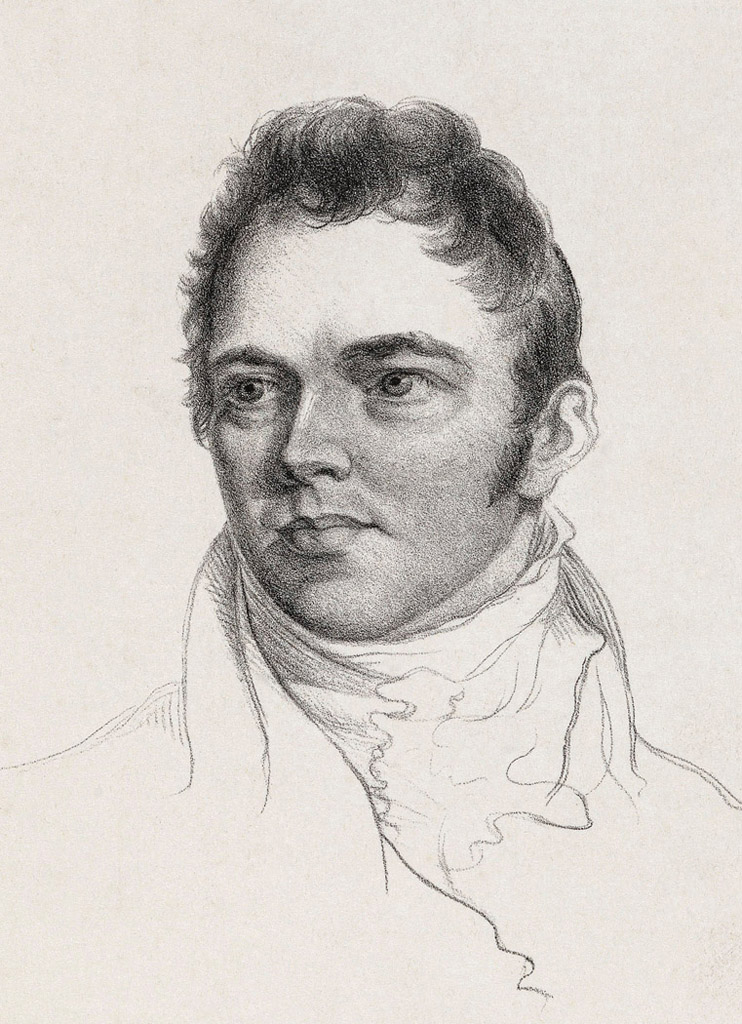 Dawson Turner (17751858), a botanist who became an expert on the antiquities of Normandy, a friend of and sometime collaborator with Hudson Gurney.
Dawson Turner (17751858), a botanist who became an expert on the antiquities of Normandy, a friend of and sometime collaborator with Hudson Gurney.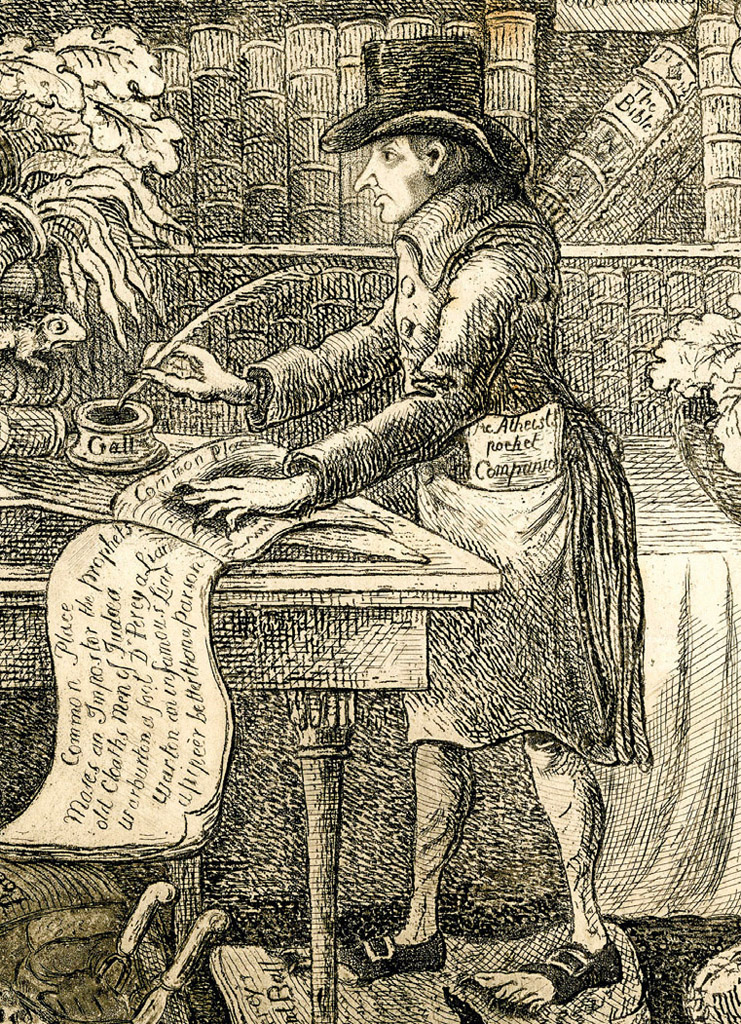 Joseph Ritson (17521803), Jacobin, vegetarian and specialist on the Robin Hood legends.
Joseph Ritson (17521803), Jacobin, vegetarian and specialist on the Robin Hood legends.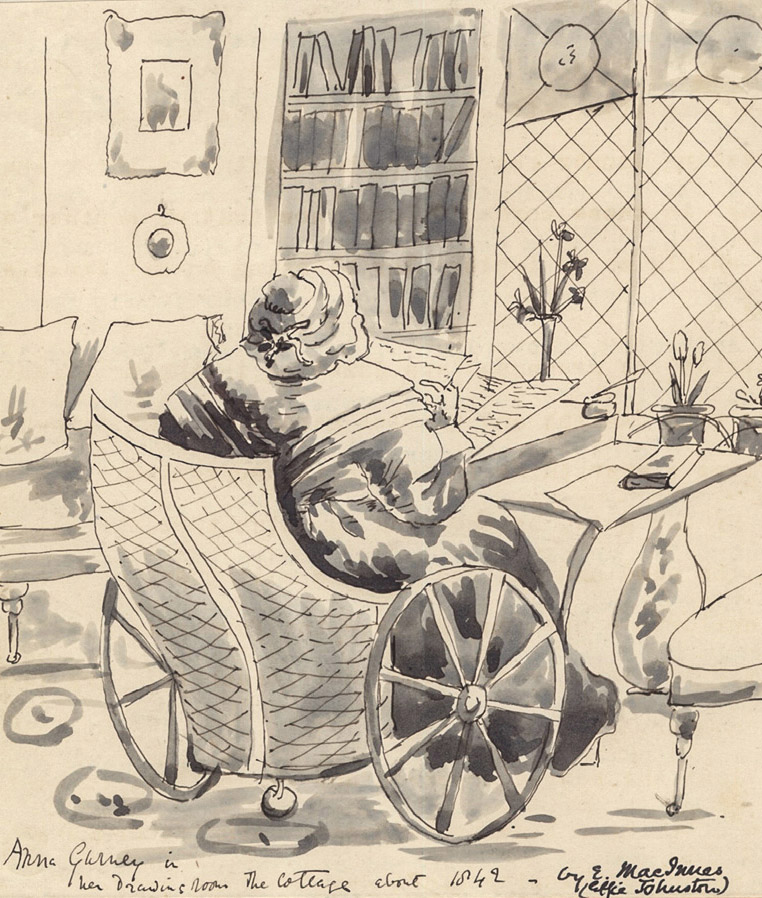 Anna Gurney (17951857). Though paralysed from childhood, she published the first English translation of the Anglo-Saxon Chronicle and was the first woman admitted to the British Archaeological Association.
Anna Gurney (17951857). Though paralysed from childhood, she published the first English translation of the Anglo-Saxon Chronicle and was the first woman admitted to the British Archaeological Association.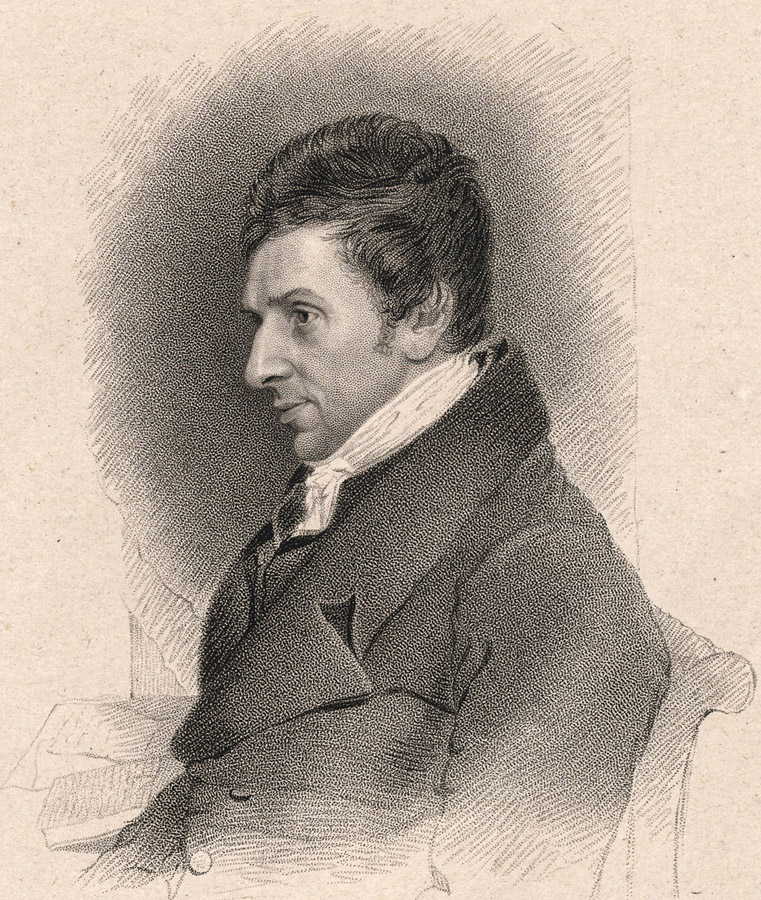 Hudson Gurney (17751864), Annas half-brother, banker and authority on the Bayeux Tapestry.
Hudson Gurney (17751864), Annas half-brother, banker and authority on the Bayeux Tapestry. The Antiquarys Last Will and Testament, Thomas Rowlandson, from The English Dance of Death (1814). The Romantic age saw a revival of interest in the Danse Macabre.
The Antiquarys Last Will and Testament, Thomas Rowlandson, from The English Dance of Death (1814). The Romantic age saw a revival of interest in the Danse Macabre.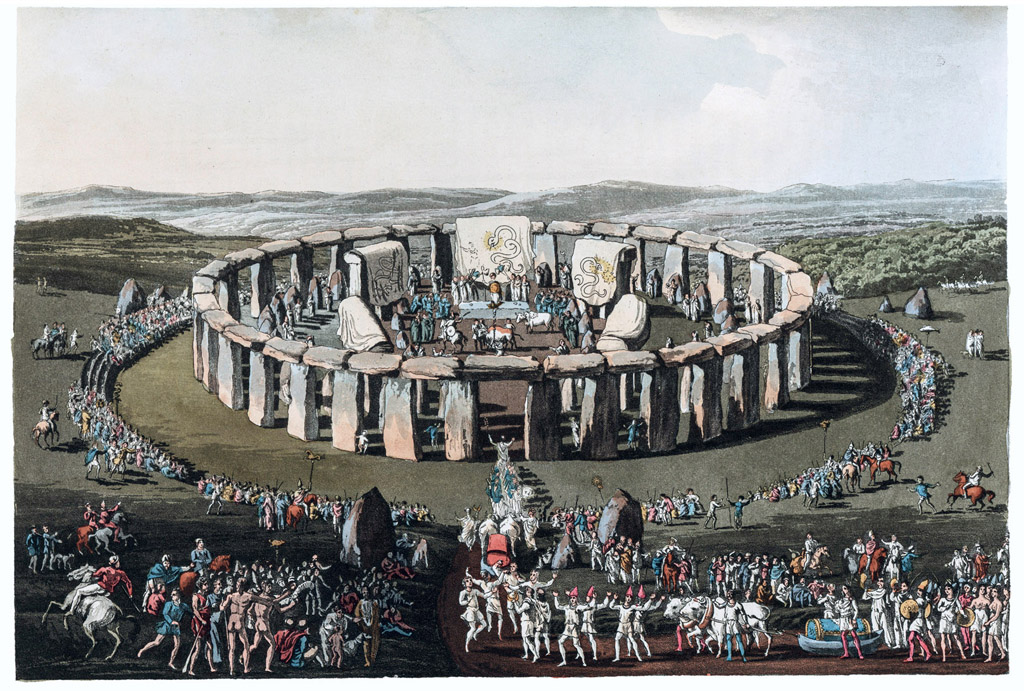 Stonehenge, as imagined in Smith and Meyricks Costume of the Original Inhabitants of the British Islands (1815). History, fiction and drama were becoming ever more entwined.
Stonehenge, as imagined in Smith and Meyricks Costume of the Original Inhabitants of the British Islands (1815). History, fiction and drama were becoming ever more entwined.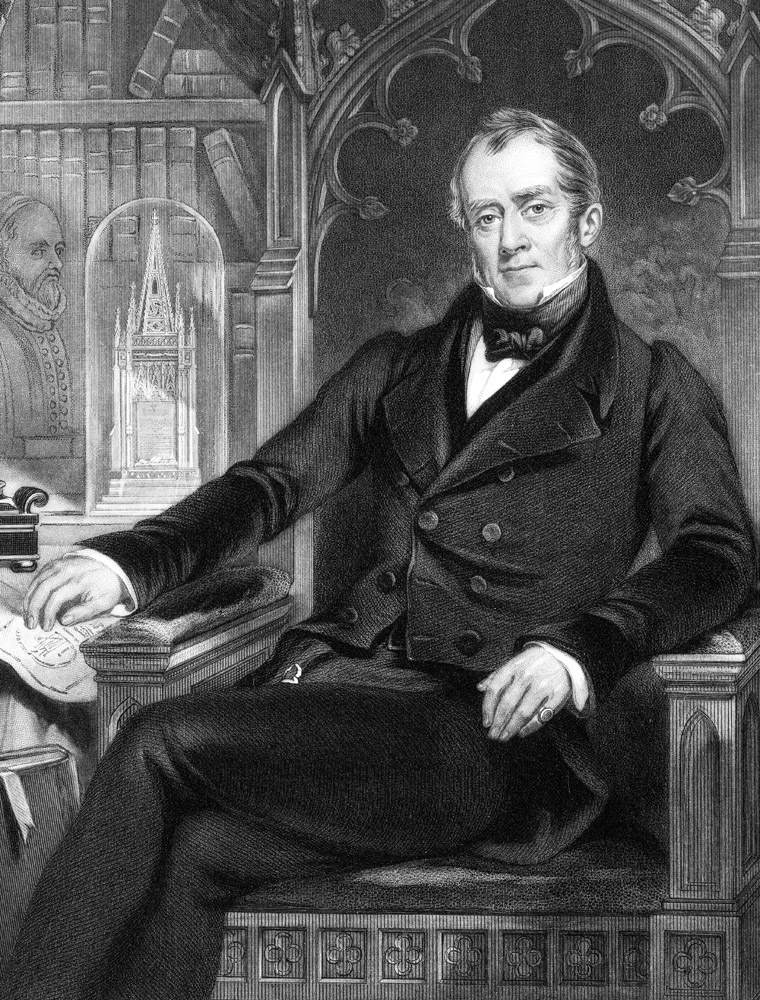 John Britton (17711857) dominated topographical and architectural publishing in the late Georgian decades. His Beauties of England and Wales was the last full county survey until Pevsners.
John Britton (17711857) dominated topographical and architectural publishing in the late Georgian decades. His Beauties of England and Wales was the last full county survey until Pevsners.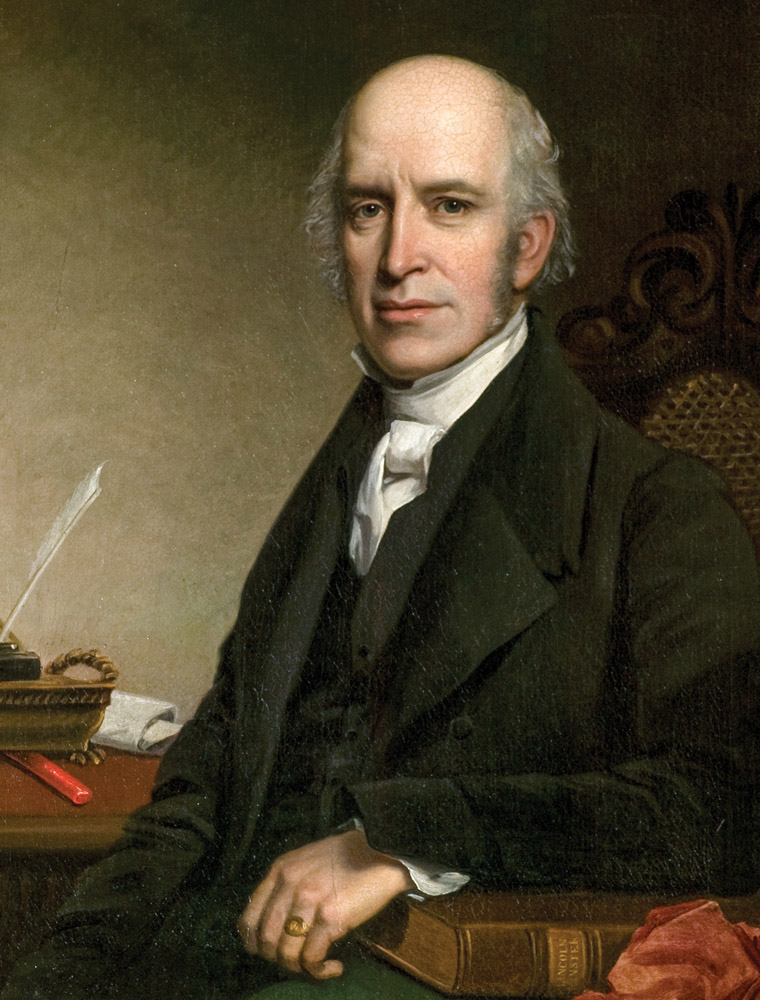 Edward Willson (17871854). Willsons essays on medieval architecture inspired his young friend A. W. N. Pugin to see the Gothic as uniquely Catholic.
Edward Willson (17871854). Willsons essays on medieval architecture inspired his young friend A. W. N. Pugin to see the Gothic as uniquely Catholic. Frederic Madden (180173), librarian and palaeographer who discovered the manuscript of Gawain and the Green Knight.
Frederic Madden (180173), librarian and palaeographer who discovered the manuscript of Gawain and the Green Knight.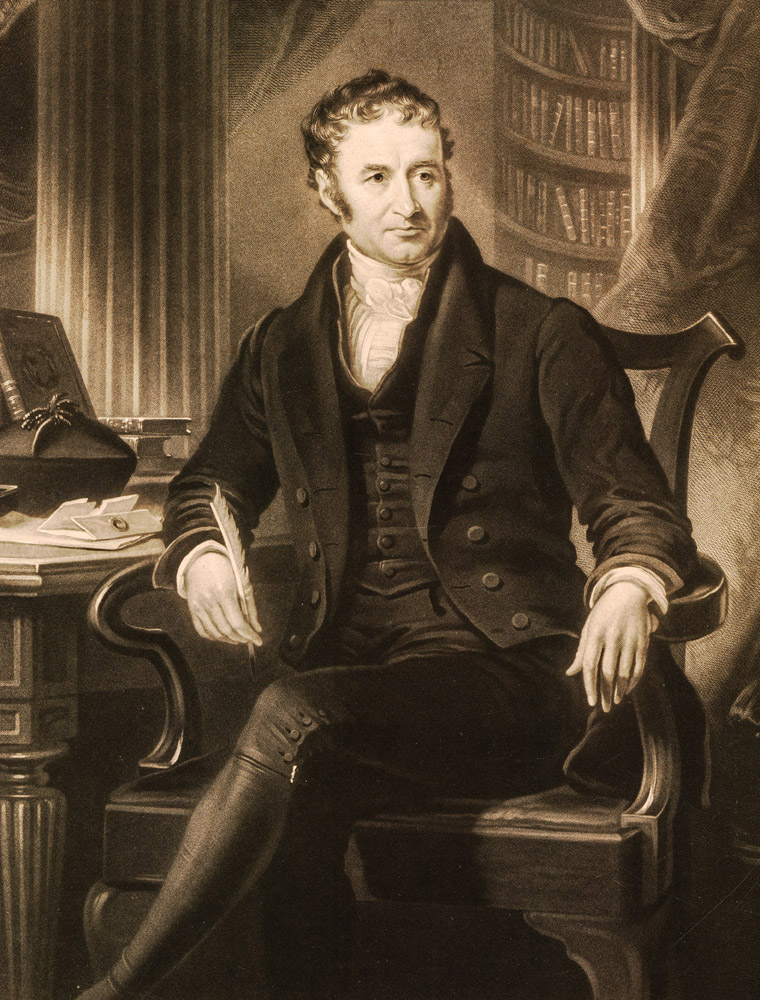 John Lingard (17711851), Catholic priest, author of The History of England (181930).
John Lingard (17711851), Catholic priest, author of The History of England (181930).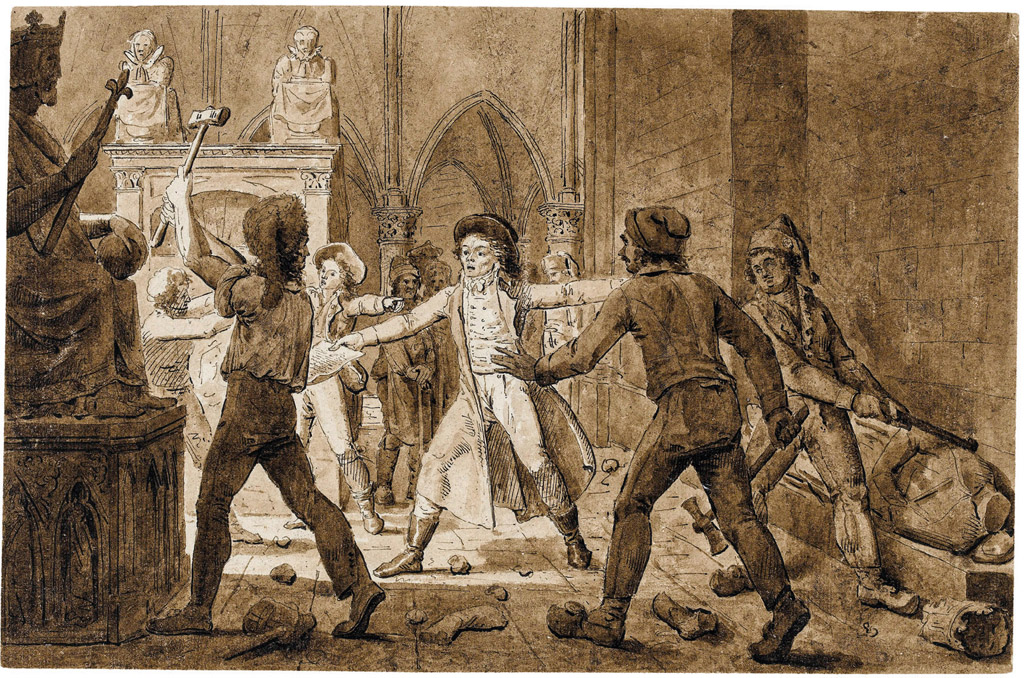 Alexandre Lenoir (17611839) defending the royal tombs in St-Denis from the revolutionaries, c.1793.
Alexandre Lenoir (17611839) defending the royal tombs in St-Denis from the revolutionaries, c.1793. Violation of the royal vaults at St-Denis, 1793. In three days were destroyed the work of twelve centuries.
Violation of the royal vaults at St-Denis, 1793. In three days were destroyed the work of twelve centuries.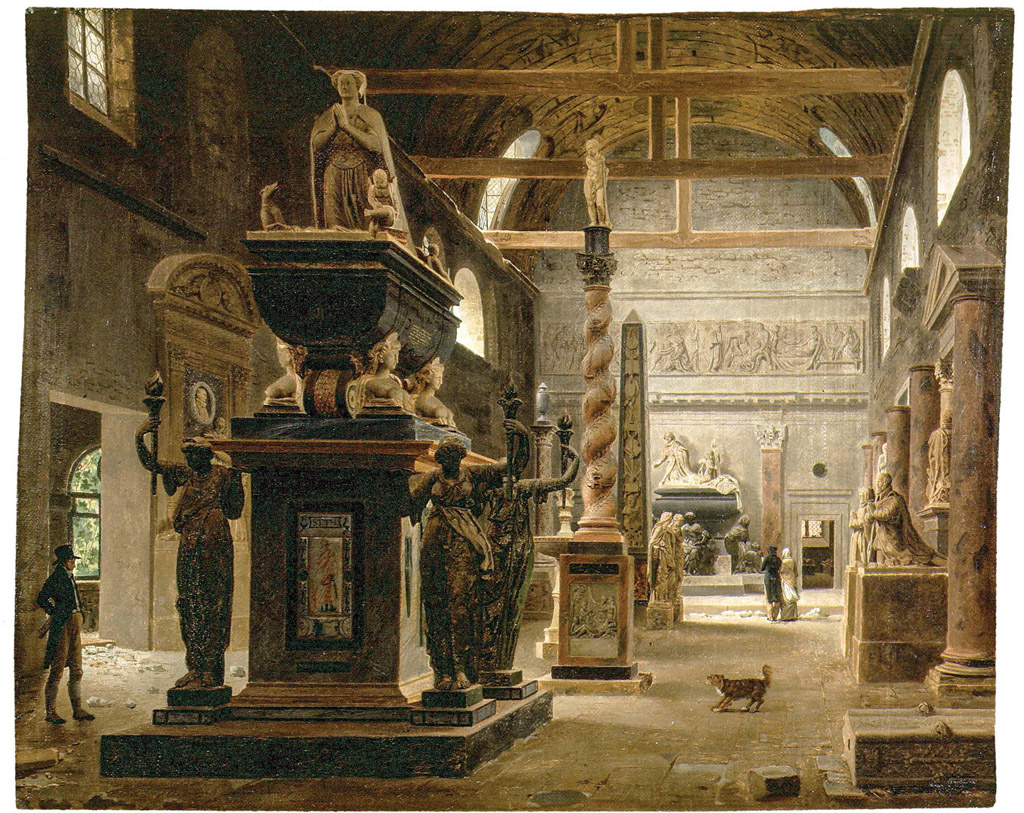 The Salle dintroduction, the former convent chapel, at the Muse des Monumens Franais, where the tombs from St-Denis were displayed. Jean-Lubin Vauzelle, c.18047.
The Salle dintroduction, the former convent chapel, at the Muse des Monumens Franais, where the tombs from St-Denis were displayed. Jean-Lubin Vauzelle, c.18047.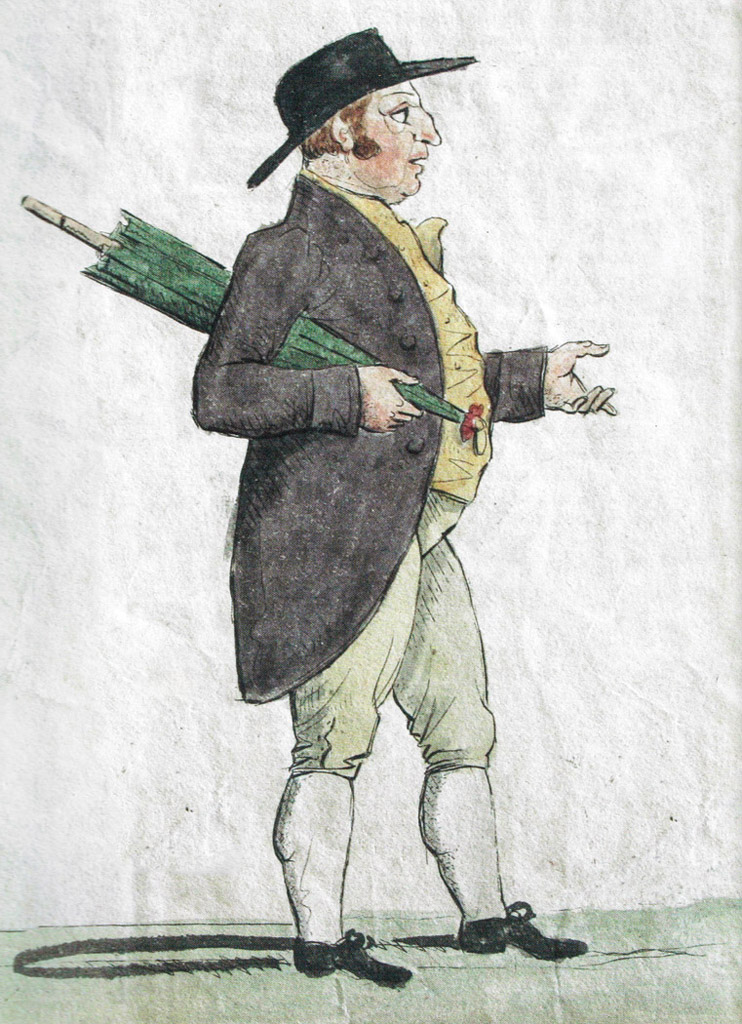 Thomas Rickman (17761841), the first person to establish the dates and periods of Gothic architecture in Britain, c.1819.
Thomas Rickman (17761841), the first person to establish the dates and periods of Gothic architecture in Britain, c.1819.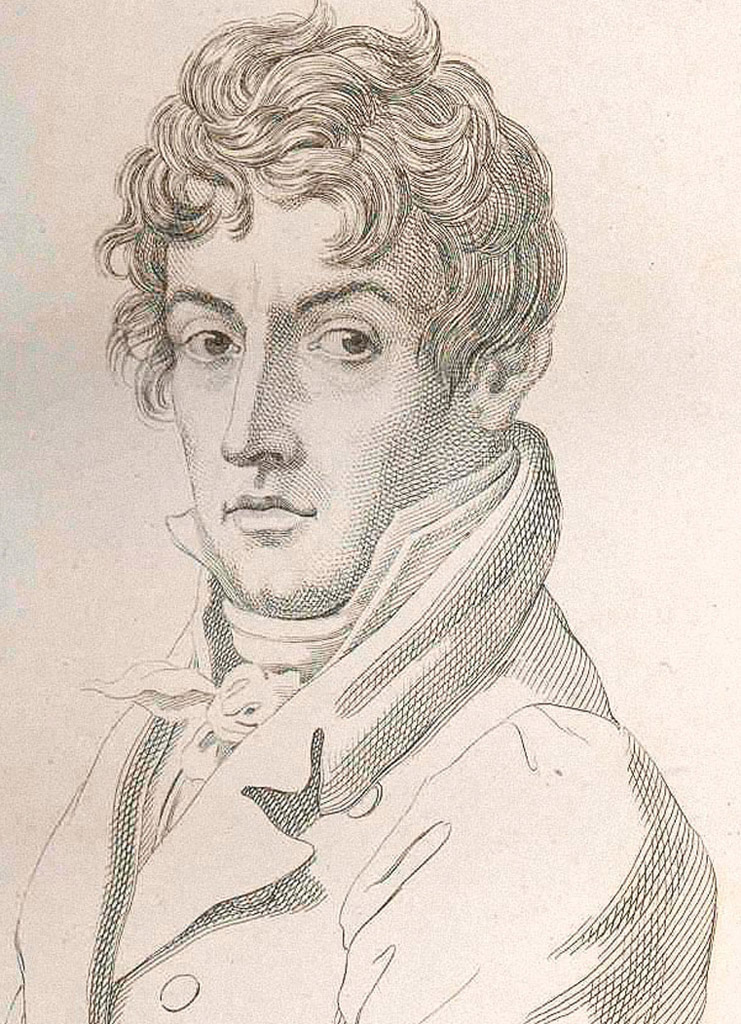 Eugene-Hyacinthe Langlois (17771837), Norman antiquary, Bohemian and tutor to Flaubert. Self-portrait engraved by Mary Dawson, c.1820.
Eugene-Hyacinthe Langlois (17771837), Norman antiquary, Bohemian and tutor to Flaubert. Self-portrait engraved by Mary Dawson, c.1820.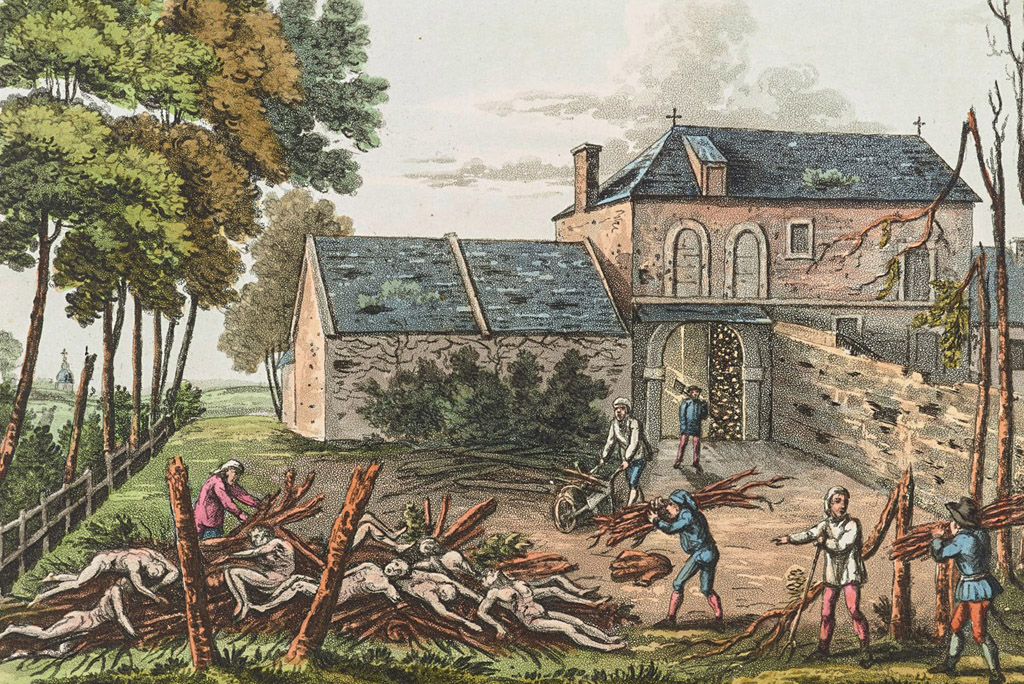 Temporary burials after Waterloo at Hougoumont Farm, where John Gage found the body of his friend Thomas Crawfurd.
Temporary burials after Waterloo at Hougoumont Farm, where John Gage found the body of his friend Thomas Crawfurd.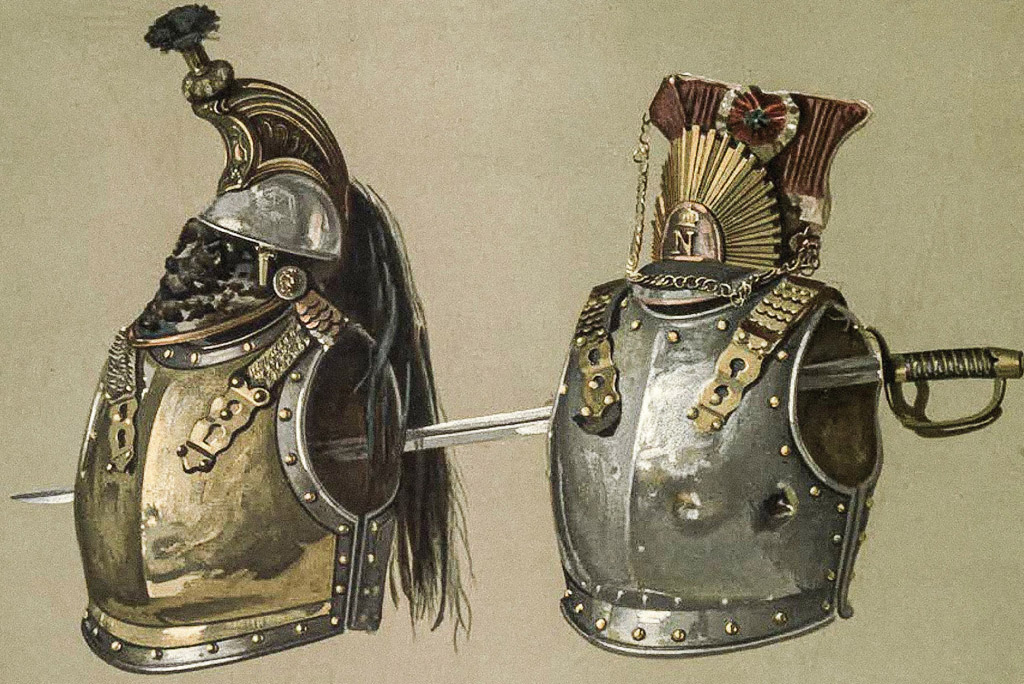 Waterloo cuirasses and a sword among Walter Scotts battlefield souvenirs. The battle was seen to mark an era, and the battlefield became an instantly historic landscape, with British sightseers collecting every fragment of material remains they could get their hands on. Scotts visit was the impetus for his novel The Antiquary, published the following year.
Waterloo cuirasses and a sword among Walter Scotts battlefield souvenirs. The battle was seen to mark an era, and the battlefield became an instantly historic landscape, with British sightseers collecting every fragment of material remains they could get their hands on. Scotts visit was the impetus for his novel The Antiquary, published the following year.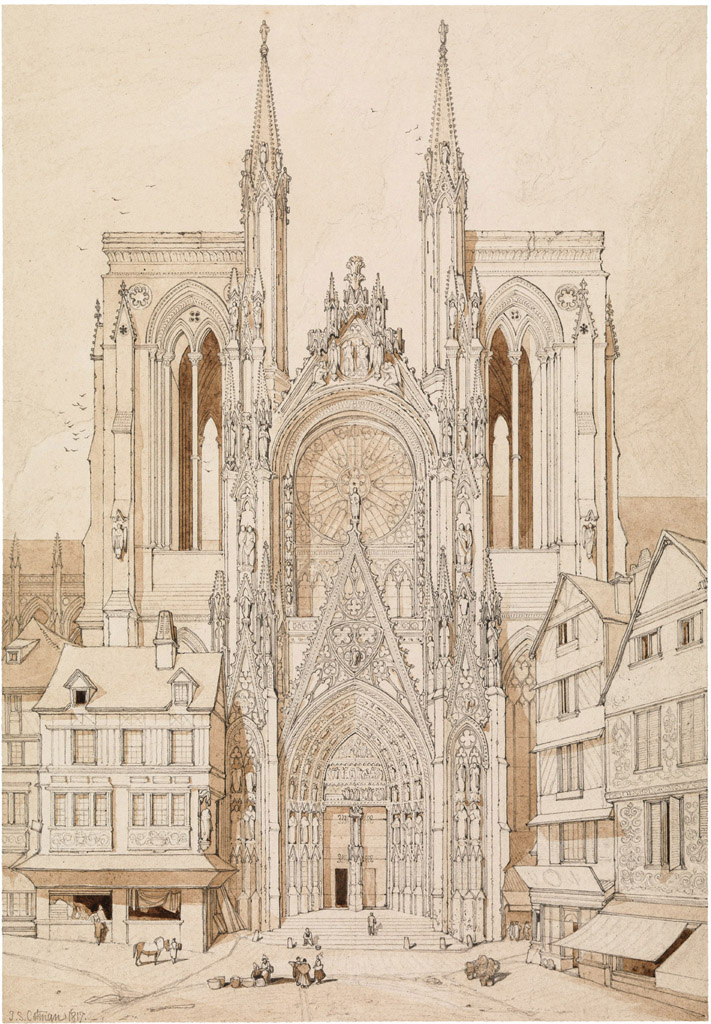 South Transept of Notre-Dame, Rouen, John Sell Cotman, published in Dawson Turners Architectural Antiquities of Normandy (1822). Turner sponsored Cotmans drawing tours to make illustrations for the book.
South Transept of Notre-Dame, Rouen, John Sell Cotman, published in Dawson Turners Architectural Antiquities of Normandy (1822). Turner sponsored Cotmans drawing tours to make illustrations for the book.